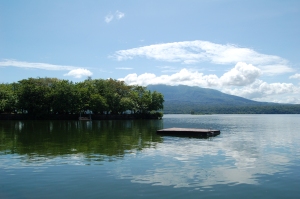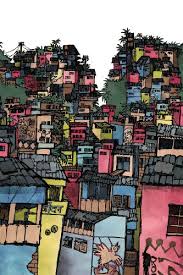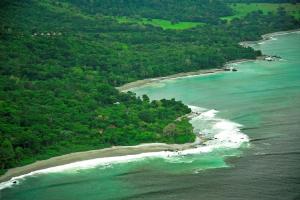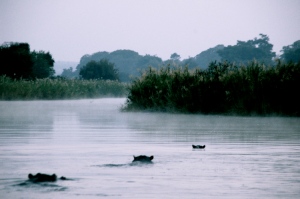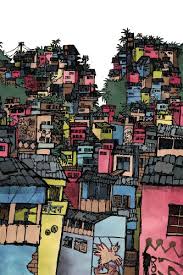 I was fortunate last year to have an essay, “Bunking With the Enemy,” included in The Places We’ve Been: Field Reports from Travelers Under 35, an anthology of travel writing. The book is a delightful trip around the world from the comfort of your armchair.
I was fortunate last year to have an essay, “Bunking With the Enemy,” included in The Places We’ve Been: Field Reports from Travelers Under 35, an anthology of travel writing. The book is a delightful trip around the world from the comfort of your armchair.
Here, Asha Veal Brisebois, the founder of The Places We’ve Been Books, elaborates on why travel writing is still relevant and why small presses matter now more than ever.
1) You’ve said before that a trip to Cuba in 2003 was the inspiration for The Places We’ve Been: Field Reports from Travelers Under 35. What was it about traveling at that time that made such a deep impression on you? What is it about being a traveler under the age of 35 that resonates with you?
 I think that it goes back to what you’ve mentioned before—maintaining a sense of awe for every time you step out into the world. I think there’s something special about traveling when you’re younger, where you have that idea that the world is just there and ready to embrace you with open arms. Maybe everyone doesn’t feel that way, but I definitely did. Also at that time, it feels like there’s so much assertion of independence and new adult identity. Travel and the encounters that may come are valued in a way of proving that “I can do this.” There’s also a test of how one’s identity might be perceived as different from place to place. The possibility of existing as someone or something different than and beyond the limits of your home. At that age, I think you’re a bit more open to strangers. And often “looking forward to” that next thing, because you don’t have too long of a past yet to reflect and look back on.
I think that it goes back to what you’ve mentioned before—maintaining a sense of awe for every time you step out into the world. I think there’s something special about traveling when you’re younger, where you have that idea that the world is just there and ready to embrace you with open arms. Maybe everyone doesn’t feel that way, but I definitely did. Also at that time, it feels like there’s so much assertion of independence and new adult identity. Travel and the encounters that may come are valued in a way of proving that “I can do this.” There’s also a test of how one’s identity might be perceived as different from place to place. The possibility of existing as someone or something different than and beyond the limits of your home. At that age, I think you’re a bit more open to strangers. And often “looking forward to” that next thing, because you don’t have too long of a past yet to reflect and look back on.
When thinking about perception, I remember an afternoon on that Cuba trip specifically and being in a plaza in Old Havana with a friend. It was a small, leafy courtyard where a totally unexpected live band played “Where the Saints Go Marching In” and stilt walkers, all dressed in homemade clown costumes, worked the crowds. One of the stilt walkers, who appeared to be Afro-Cuban, passed by us and commented pretty aggressively on my friend’s skin-tone. We’re both black but he made some comment that we didn’t quite understand, preceded by an expletive, about her fairer skin. We ignored the guy, but it became obvious pretty quickly that people in the square kept yelling at us, really just yelling at my friend, to get her attention. The oddest interaction was with a male tourist who seemed to be from Europe who jumped in front of her and yelled “Mulatta! Mulatta! I want to take your photo!” I am not kidding. She pushed his camera out of her face and we kept walking. By then it was very clear that because of the way my friend looked, her physical traits and also style, she was regarded as being on display, by and for other travelers and locals alike, in a way that definitely didn’t always respect her space. It didn’t seem like anyone else in our group had quite this same experience, and it definitely crossed my mind that my friend would have such an odd life living there fulltime and being out and about as a single woman.
But really, that Cuba trip was the first time I really had the opportunity to travel to someplace that had been my “This is where I’d love to go…” ambition for a long time (growing up, I’d considered myself as a sort of delicate revolutionary; asthmatics can be passionate and powerful too). So it was likely extra special to me because of that.
I’ve mentioned this before, but having a camera battery die on you back in 2003 and in a place where it’s nearly impossible to find a replacement can actually be a lucky thing. It really does make you want to write to remember. And writing about Cuba is the seed that grew into me wanting to put together a whole book of lots of different people and travels. I wanted to hear from other folks having experiences and like mine, and I wanted to hear more about what my peers were doing and thinking. Initially, The Places We’ve Been: Field Reports was planned as an under-30 book, but things take a long time to create. Hence the under-35…
2) You collected such a diverse set of voices for this book. How did you choose the writers included and why?
I’ve been using this line a lot, but I really like and appreciate how one review on Amazon described The Places We’ve Been: Field Reports… as “real-life travel stories from diverse corners of the globe—and an even more diverse and eclectic collection of writers.” For me, in putting the book together, that second part was very important and I still feel like I could have done even more. To bring the full collection together, I started out with a made-up table of contents as part of the early book proposal. It was a “shoot for” list of the types of stories and range to go after. In reviewing the submissions that came in, favorites were declared by me and the other reviewers. It was as simple as, “I love reading this,” whether because of depth, or humor, or a perspective or experience that seemed unique. There was one story, the Alberta piece by Carys Cragg, where I was almost literally on the edge of my seat at the last page when it ended. Everyone felt that way when it came in. Another story, by Lindsey Laveaux, took place in Cameroon and by the end the reviewers were saying, “How the heck did this really happen to this girl?” Of two of the other stories, one that takes place in Rwanda and is told by Derek Helwig, and one that takes place in Finland and is told by Justin Howard, I showed an early draft to my husband (who is by now lovingly sick of looking at drafts of things from me over the years since we were first dating). He read the two and said not at all joking, “I think stories like these could actually change the world.”
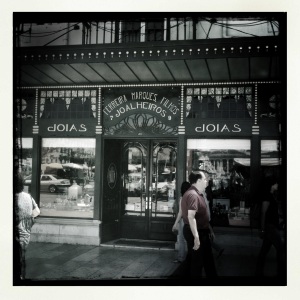 It’s interesting, in doing more editing projects over the years—at this point spending much more of my time as an editor than a writer, and really learning to see different types of projects—I’ve come to value story over everything else. When you’re younger and developing and learning to be a writer, it seems like voice is the thing that’s most emphasized. Like, What’s your writing voice? Writers hold on to their voice a lot. Looking at things as an editor (at least whenever that’s the cap I’ve got on) I really do approach it as what’s most important is bringing a meaningful story. Especially bringing a meaningful story that’s accessible to readers. It’s also what turns out to be rarer. A nonfiction story can be fleshed out, reworked, revised, whatever. But you can’t make up something that didn’t happen or just isn’t there.
It’s interesting, in doing more editing projects over the years—at this point spending much more of my time as an editor than a writer, and really learning to see different types of projects—I’ve come to value story over everything else. When you’re younger and developing and learning to be a writer, it seems like voice is the thing that’s most emphasized. Like, What’s your writing voice? Writers hold on to their voice a lot. Looking at things as an editor (at least whenever that’s the cap I’ve got on) I really do approach it as what’s most important is bringing a meaningful story. Especially bringing a meaningful story that’s accessible to readers. It’s also what turns out to be rarer. A nonfiction story can be fleshed out, reworked, revised, whatever. But you can’t make up something that didn’t happen or just isn’t there.
3) Who is your favorite travel writer and why?
There are a few books and writers that I come back to over the years and always feel drawn-in by. Some of them are more about place than travel, but there’s a definite good mix.
The meetings with the family began with the big meals in Cholon. When my mother and brothers come to Saigon I tell him he has to invite them to the expensive Chinese restaurants they don’t know, have never been to before. These evenings are all the same. My brothers gorge themselves without saying a word to him. They don’t look at him either. They’re incapable of it.
Marguerite Duras is my Virginia Wolf. She’s also my E.L. James. If you’ve never read this book (but how is that possible?) you should. It’s based on part of her life’s true story.
American real life is rowdier, more disturbing, more charming than anything dreamt of in your or my philosophy. This country was (and is) in a strange, even an unprecedented, condition. […] the economic prospects of most Americans have been dimming.
Finnegan is a smart writer and this is a smart project. I love it because it’s an “America” book that challenges assumptions and images of struggle and poverty, what it’s like to come of age in different regions across the country. There are rival factions in the Southern California punk scene, and a young drug dealer in New Haven. What really feels special though is the amount of time that Finnegan spent with the teenagers he wrote about and how he really got to know them, in a way, as friends. He seems like a writer who really cared and wasn’t just in it for the story.
I met Arjun DasGupta at the Star of India, a small restaurant not far from my flat. It was Saturday at lunchtime and the tiny restaurant was crowded. “Do you mind if I sit here?” he said. “There is nowhere else.”
I once went to a small reading of Ifeona Fulani’s work where we the audience literally yelled “No! You must continue!” once she tried to leave the podium at her break point. That story was “Elephant Dreams” which remains one of my favorites to this day. It’s included in this collection.
The children were silent, except for the five-year-old, Myeko, who kept asking questions: “Why is it night already? Why did our house fall down?”
This book as a whole is Creative Nonfiction—the master class. Read it. Read about it.
They called us trolls because we lived for nine months of the year below (that is, south of) the bridge…
This book won the 2003 Bakeless Prize in Creative Nonfiction from the Bread Loaf Writer’s Conference, selected by Ted Conover. It takes place over the years and through personal memories, set in a summer retreat on Michigan’s Upper Peninsula. Benson writes beautifully, and this is probably my favorite travel book to read often and over again.
Sixteen years ago I spread a map before me and planned a journey that would begin from a point in North Africa and end in the capital of the old Soviet Empire. My journey was planned with the notion that I would be moving from warmth to cold, from democracy to dictatorship, from freedom to restriction. Should I spread a map before me today, a journey from west to east that was defined by such clear-cut binary oppositions would be impossible to plan.
My favorite section of The European Tribe is the introduction. This is so much so, that I want to run and grab the hand of every reader who hates and skips over reading introductions in general, leading them back to Phillips.’ I also love the last scene in this book, where (semi-spoiler) the writer pops in for a Parisian visit with James Baldwin. They get sloshed and tell jokes across a table. How envious is that?
People spoke glowingly of the seafaring activities of the men in their families and what these activities afforded them. Seafarers never returned to Liverpool empty-handed.
I’ve found that some really cool narrative nonfiction books also happen to be by anthropologists. Jacqueline Nassy Brown has done one of them. This was a really interesting and unexpected history and project to come across.
(Now, I am cheating a bit here. The rest of the list to follow is of travel films, not books.)
“Listen! I’m not a nun! I just don’t want to go out with…everyone! I don’t like clubs and… and I don’t like dancing. Maybe I’m not your idea of a typical trendy London girl, but techno music bores me, all right? And if I’m a nun because I don’t get out of this house enough for you guys, then that’s too bad!”
I love this film because it’s about a very eclectic group of students that comes together from different cultures all across Europe, and suddenly they’re contemplating how to be open to each other. They’re confronting stereotypes, having secret affairs, and the quarter-life crisis…right up The Places We’ve Been’s alley. In the film, picture an interpersonal consideration of E.U. politics at the time—staring sexy “before they were megastars” Romain Duris and Audrey Tautou.
“I think I belong here. If I go abroad, I may gain some freedom, but that freedom is not for me. It does not belong to me. I haven’t tried to get it. It is theirs… I prefer to stay here and change the situation here.”
The three unexpected female friends of an international pro basketball player steal this film for me. Hilda, Laleh, and Elaheh. I adored them from the first time that they snuck into his house to visit and talk politics and drink beer. Kevin Sheppard, the focus of the documentary, is pretty awesome too. He’s left the U.S. Virgin Islands to attempt to lead the A.S. Shiraz team in Iran. The film synopsis and official reviews like to call him “charasthmatic.” I’d say it’s definitely true.
“Whoever is responsible, I hope that they can sleep at night.”
Spike Lee doesn’t want anyone to forget what happened to New Orleans residents on the day of Hurricane Katrina—or the storm’s aftermath. I am captivated by how this film tells the story from a chorus of voices. It is long, but never boring.
“What do you do all day?”
“Watch other people live… Wonder who they are. Where they go. They become heroes in my little stories.”
Watch Paris for the beauty as well as the stories.
4) The world of travel has obviously changed a lot in recent decades—even since your trip to Cuba in 2003. What are the current challenges you see for meaningful travel experiences and how can modern travelers retain a sense of awe in an increasingly small world?
I guess that this can relate to one of those greater life considerations, where we’re told to “stay excited.” Not to walk through any experience or setting taking it for granted. I totally agree this is harder today, because we’re exposed to so much in so many ways and there are so many options. When I feel like I need to reconnect with that sense of awe and motivation, I’m able to get there when I go back to the things that caused it first. Like before in talking about books, when I start to feel in writer or editor churn mode and I’m not feeling that thing that made it all matter in the first place, I’ll take time out alone to reread one or a few of my most favorite books. It’s a way to connect again. I think that can be the same for travel. When you go back to something that made you feel, like even old journal entries or photos from a trip. Or letters or emails from someone you met there, if you still have them.
 When I travel now, I do like trains because the time passes and the scenery changes and you are in the act of going somewhere. The world is a bit less small and a bit less connected again, and you don’t pop out instantaneously. I’m not sure that I have one favorite trip (no North Korean boys soccer team yet!), but my most recent train trip was through the Adirondack Mountains on the east coast of the U.S. It was in the middle of a winter snow and rain storm, and terrifying as we rode right up on the edge of grand lakes and cliffs. I think that most of the passengers aboard were nervous at points actually, because once we rode out of the storm and past the cliffs people went from silence to chatting and walking around. The ice and snow were gorgeous though, and the highlight of the day was looking out and briefly seeing a pair of soaring bald eagles.
When I travel now, I do like trains because the time passes and the scenery changes and you are in the act of going somewhere. The world is a bit less small and a bit less connected again, and you don’t pop out instantaneously. I’m not sure that I have one favorite trip (no North Korean boys soccer team yet!), but my most recent train trip was through the Adirondack Mountains on the east coast of the U.S. It was in the middle of a winter snow and rain storm, and terrifying as we rode right up on the edge of grand lakes and cliffs. I think that most of the passengers aboard were nervous at points actually, because once we rode out of the storm and past the cliffs people went from silence to chatting and walking around. The ice and snow were gorgeous though, and the highlight of the day was looking out and briefly seeing a pair of soaring bald eagles.

